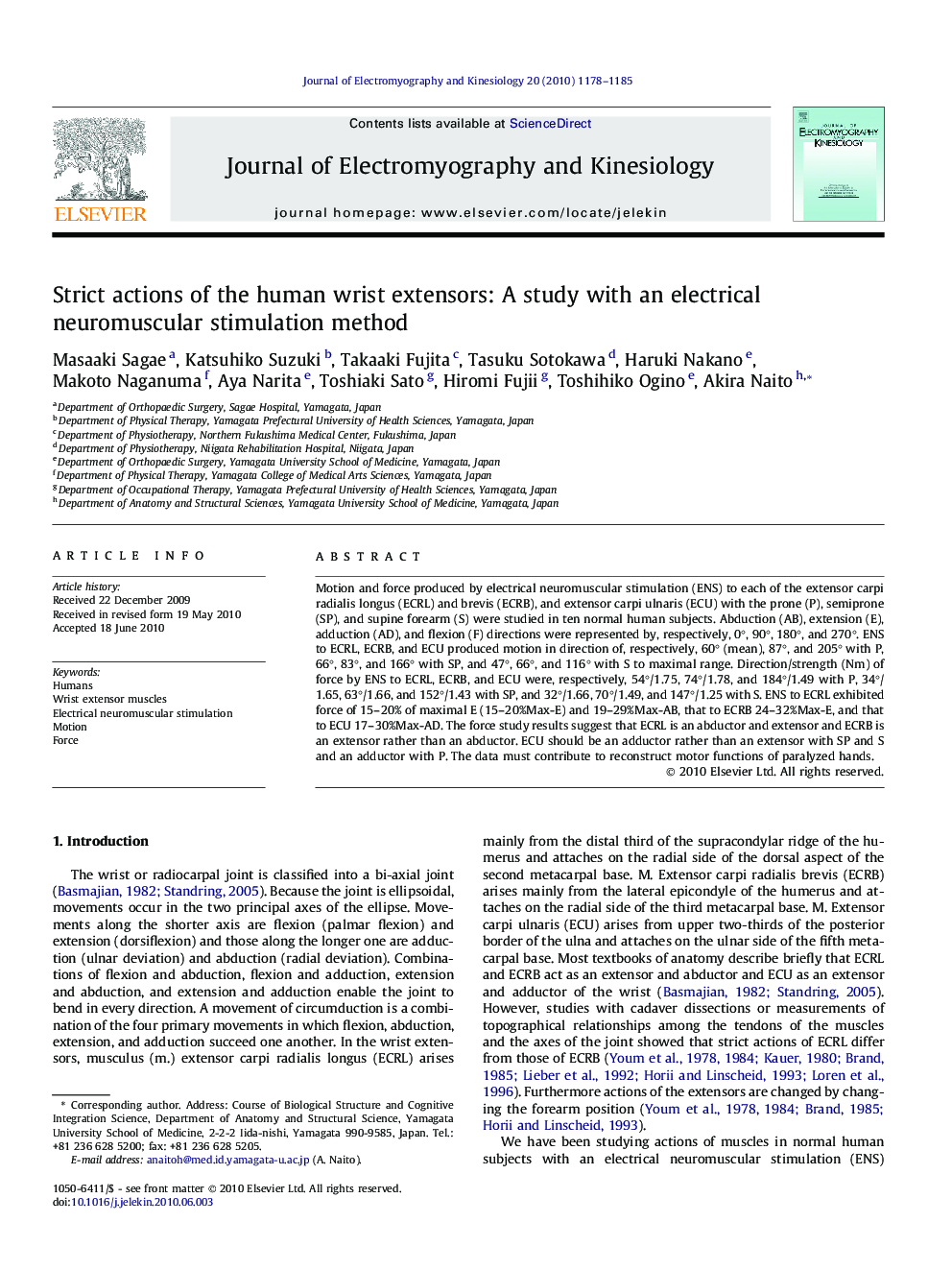| کد مقاله | کد نشریه | سال انتشار | مقاله انگلیسی | نسخه تمام متن |
|---|---|---|---|---|
| 4064938 | 1604188 | 2010 | 8 صفحه PDF | دانلود رایگان |

Motion and force produced by electrical neuromuscular stimulation (ENS) to each of the extensor carpi radialis longus (ECRL) and brevis (ECRB), and extensor carpi ulnaris (ECU) with the prone (P), semiprone (SP), and supine forearm (S) were studied in ten normal human subjects. Abduction (AB), extension (E), adduction (AD), and flexion (F) directions were represented by, respectively, 0°, 90°, 180°, and 270°. ENS to ECRL, ECRB, and ECU produced motion in direction of, respectively, 60° (mean), 87°, and 205° with P, 66°, 83°, and 166° with SP, and 47°, 66°, and 116° with S to maximal range. Direction/strength (Nm) of force by ENS to ECRL, ECRB, and ECU were, respectively, 54°/1.75, 74°/1.78, and 184°/1.49 with P, 34°/1.65, 63°/1.66, and 152°/1.43 with SP, and 32°/1.66, 70°/1.49, and 147°/1.25 with S. ENS to ECRL exhibited force of 15–20% of maximal E (15–20%Max-E) and 19–29%Max-AB, that to ECRB 24–32%Max-E, and that to ECU 17–30%Max-AD. The force study results suggest that ECRL is an abductor and extensor and ECRB is an extensor rather than an abductor. ECU should be an adductor rather than an extensor with SP and S and an adductor with P. The data must contribute to reconstruct motor functions of paralyzed hands.
Journal: Journal of Electromyography and Kinesiology - Volume 20, Issue 6, December 2010, Pages 1178–1185